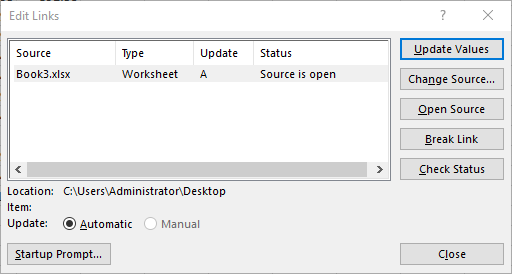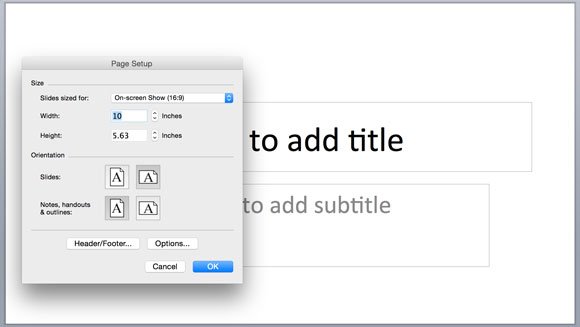How To Check Image Sizes In Ppt For Mac
Skype for business 2016 mac not able to add a contact to a group or list. Hi Sara, You’re Skype client is the main Skype for Business window – if you don’t see any call forwarding settings, then you’re probably not using Enterprise Voice. I’ve tested against a cloud only Skype for Business client, and there is no option to assign someone else as a delegate on your account. Hopefully will bring this functionality to Office 365 users, but that is still a ways away (unless you live in the US). Add a Delegate in Skype for Business By Jun 24, 2015 Note that this option will only work for clients that have Enterprise Voice enabled – specifically, this option is only available in on premise deployments of Skype for Business, as the Exchange Delegates don’t get synced into Skype for Business Online.
Select All - I recommend using Select All the first time so you can see the size of all your slides. Choose destination Windows folder. Review sizes and you can launch each individual-slide powerpoint file to see which one it is and whether you can reduce the size. For more PowerPoint tips and ideas, check out the resources below: An Easy Tip to Merge PowerPoint Slides from Different Templates. Working with Graphics in PowerPoint: 4 Simple Tips to Try. How to Use PowerPoint to Create Screen Capture Videos. Looking to drive sales productivity at your organization? Learn more about how Brainshark can help. (Only tested it on PPT 2008 for Mac): if you change the document size from, let’s say A4 to A3, all ‘artworks’ keep it’s relative size. That means that the text scales! You could use this ass folows: group the objects, copy-pase the group into a new slide in a new presentation, scale this new presentation, copy-paste the group back in. Because images need to be printed at 300 ppi, there’s a quick and easy way to determine the maximum size that an image can be printed at: simply divide the number of pixels in the image by 300. Here’s an example: The image below is 600 x 300 pixels. 600 x 300 divided by 300 = 2 x 1, so the largest size this image can be printed at is 2″ x 1″.
First of all, at this point I just default to doing every presentation in 16:9 to start with (haven't figured out how to make it PowerPoint's default as well, though). Letter boxing on a projector isn't that noticeable and more and more screens everywhere are 16:9 native. (Plus, movies have made 16:9 letterboxed look 'cool' and 4:3 letterboxed like 'old tv show'.) Anyway, a tip I discovered in a large presentation with a lot of screenshots was that the the possibly unintuitively placed Crop > Fill and Crop > Fit, both which 're-auto-crop' on the Picture Tools Format ribbon tab can be your friends in the reformat as they are both original aspect ratio preserving, particularly if your images follow the templated design layouts. Because they are ribbon commands I could use the usual keyboard tricks: Page Down, Tab to the image, then Alt,JPVT may be a bit unwieldy but still presumably somewhat faster than your version, Scott.
One of the most common issues that we have encountered when printing posters for our customers is the incorrect page size specified in their PDF files. For example, a customer wanted to print a 36' x 56' poster, but the PDF file that he sent to us only had a page size of 7.5' x 12'. Enlarging a 7.5' x 12' page into a 36' x 56' poster likely would generate a poster that does not have enough resolution for quality viewing. Since the page size problem of a PDF file is most likely caused by the incorrect slide size set in a PowerPoint file, which is later used to generate the PDF file, in this post we want to talk about the slide size setting of a PowerPoint file. When you create a poster in PowerPoint, you are essentially creating one big 'slide' that is your poster.
The default slide size of a new PowerPoint presentation is 7.5' x 10'. As mentioned previously, the page size of 7.5' x 10' cannot be printed into a good quality poster. Therefore, you have to set the slide size to the desired size of your poster. How to set the slide size? IMPORTANT Follow these steps only before you add content to your slide. If you change the slide size or orientation after you add content, the content may be rescaled. How to check mac for software updates.
 For PowerPoint 2007 or PowerPoint 2010: • On the Design tab, in the Page Setup group, click Page Setup. • In the Slides sized for list, select Custom.
For PowerPoint 2007 or PowerPoint 2010: • On the Design tab, in the Page Setup group, click Page Setup. • In the Slides sized for list, select Custom.
T ype or select the measurements that you want in the Width and Height boxes. • To set the page orientation for the slides, under Orientation, under Slides, click Landscape or Portrait. For PowerPoint 2003: • Pull down the File menu and clikc Page Setup.
• Select Custom as the slide format from the Slides sized for list. Type the measurements you want in the Width and Height boxes. • To set the page orientation for the slides, under Orientation, under Slides, click Landscape or Portrait. One final note on this topic. Although PowerPoint limits your slide size to 56' in width or height, it is possible to make a poster longer than 56' by reducing the size of the original slide.
For example, if you need a 36' x 60' poster, make the poster one-half that size, i.e. Engineers at PosterSmith.com can then scale the reduced-size poster and print it to the correct size.
Digital Image Sizes

One thing to keep in mind with this method is that you have to consider the possible resolution loss of the images that are placed in the slide when the page size is scaled up.
Image Sizes In Wordpress
Say someone sent you a Word document with a lot of images, and you want you to save those images on your hard drive. You can extract images from a Microsoft Office document with a simple trick. If you have a Word (.docx), Excel (.xlsx), or PowerPoint (.pptx) file with images or other files embedded, you can extract them (as well as the document’s text), without having to save each one separately. And best of all, you don’t need any extra software. The Office XML based file formats–docx, xlsx, and pptx–are actually compressed archives that you can open like any normal.zip file with Windows. From there, you can extract images, text, and other embedded files.